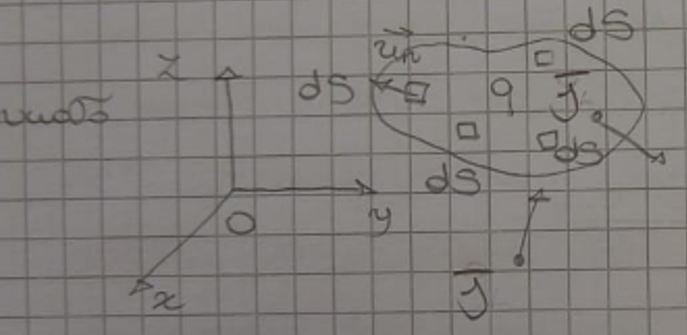Charge Conservation Law
DEFINITION
DEFINITION - CLASSIC
Mass Conservation Law applied to Flux #ASK
Charge Conservation Law
DEFINITION - SPECIAL RELATIVITY
Charge Conservation Law - Special Relativity
"RAZIO"
"RAZIO" - CLASSIC PHYSICS
TLDR
- Surface w/ static + moving charges inside
- Calculate Flux
- Apply 1° Maxwell Equation
- Take a closed surface
. Inside it, there is a total Charge (that can be exchange w/ the outside) made of:

2. Divide surface
3. Calculate Flux charges going through
- IF charges are exiting → Flux
- IF charges are entering → Flux
4. Apply 1° Maxwell Equation to find total Charge
5. Substitute and resolve →
"RAZIO" - SPECIAL RELATIVITY
- Classically
= - We are working w/ Four-Current
→ = = #TODO
QUESTIONS
<% tp.file.cursor(20) %>
<% tp.file.cursor(21) %>